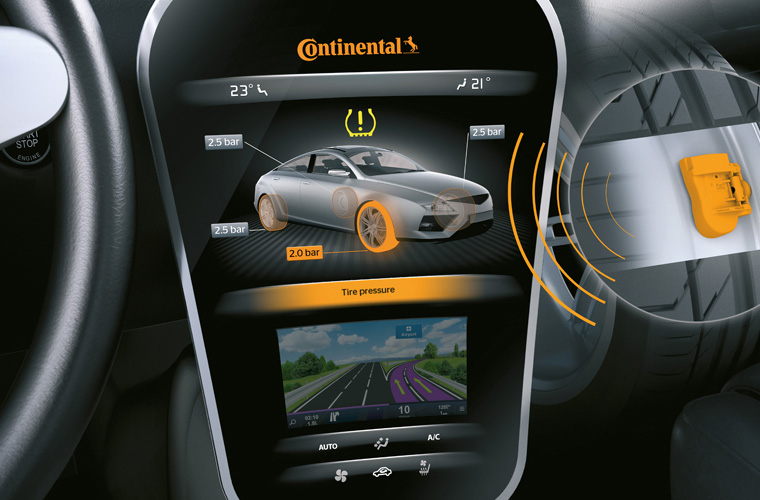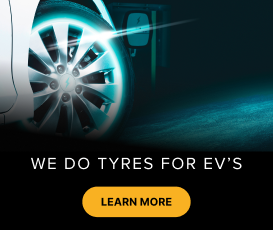Having the correct tyre pressure matters
Remember the last time you looked under the bonnet of your car? No? Don’t worry, you’re not alone. Automotive technology these days is so reliable that we rarely need to. And those things we should be checking regularly, like the oil or coolant levels, are rarely considered, slipping our minds.
As such, it’s little wonder we’re also un likely to check our tyre pressures either. Unfortunately we need to, because tyre pressures really, really matter. And if you think that having a Tyre Pressure Monitoring System (TPMS) fitted excuses you, you’re wrong – you still need to check.
At Advance Pitstop we have a reputation for putting driver safety first and foremost. The products and services we provide keep you and your family as safe as possible while driving. This tyre safety article shows you why tyre pressure maintenance is vital, how to check your tyre pressures, and even how doing so can save you money – including avoiding expensive fines.
Tyre safety equals driver safety
Experience has taught everyone on the Advance Pitstop team when it comes to tyre pressures too much or too little air can be dangerous, and sometimes lethal.
If your tyres are under-inflated they will affect your car‘s handling, including your ability to stop quickly and safely. Also, under-inflated tyres are softer, which means that if you come into contact with sharp objects like glass and nails they won’t always glance off yur tyres, dramatically increasing the chances of getting punctures. You don’t want to lose control of your vehicle, particularly at high speeds, with a puncture. The outcome could be fatal.
High-speed blow-outs are also more likely if you have over-inflated tyres. This is because there is much less flexibility in the tyre shape, resulting in a more rigid tyre that has to deal with increased stresses. The consequences of a high-speed blow-out has obvious and something that none of us want to have to face.
Another consequence of incorrectly inflated tyres is that they wear out unevenly. Uneven tyre wear occurs differently, depending on how tyres are inflated. If under-inflated, tyres wear down faster at the edges, and this adversely affects driver handling. If over-inflated, tyres wear down more in the centre. The result is a loss of vital tyre tread, just where the tyre makes most contact with the road, and where grip is needed the most.
As if this isn’t bad enough, as a result of uneven wear incorrectly inflated tyres will need replacing more often, resulting in additional, unwanted expense for you.
Life saver, money saver
As the tyre inflation graphic above illustrates, if a tyre is under-inflated it will have more contact with the road. The consequences of this is the generation of increased ‘rolling resistance’ – what we commonly know as friction. As a result your vehicle has to use more fuel than it would otherwise have to if the tyres were inflated correctly.
If you ride a bicycle you’ll aware of this reality already. It’s much harder to cycle from A to B if your tyres are under-inflated. When trying to cycle with under-inflated tyres, a rider can really feel the extra effort that’s required in their lungs and legs. This is because they have to expend more energy. It‘s the same when driving a car. By being under-inflated by 15 PSI (or 1 Bar) If your car’s tyres will encounter more rolling resistance and as a result you’ll spend a lot more on your fuel.
The benefits of driving a vehicle with TPMS

For all of these reasons, it’s now mandatory for any new cars sold in the EU to have a Tyre Pressure Monitoring Systems installed. TPMS tech has sensor valves that automatically monitor each of your tyre’s pressure. And if the tyre pressure falls, a warning light on the car’s instrument panel alerts the driver, prompting them to check their pressures manually.
It’s worth remebering that if your vehicle has TPMS fitted you need to ensure that it is correctly maintained by a qualified technician. A faulty TPMS is an automatic MOT fail.
Premium tyre manufacturers, like Continental Tyres, are highly respected leaders in the field of driver safety technology. There technology includes Tyre Pressure Monitoring Systems and Electronic-Tyre Monitoring Systems (eTis). Driver safety is paramount to Continental, and is the driving force behind their Vision Zero initiative to end driver accidents, injuries and fatalities.
Tyre pressures: how to check yours

In Ireland, DTTAS (Department of Transport, Tourism And Sport) and Continental Tyres recommend that tyres should be checked at least once a month, even if your vehicle is fitted with a tyre pressure monitoring system.
Tyre pressure readings are more accurate when the tyres are cold. As such, it’s a good idea to check them before you begin a journey. Alternatively, when you fill up at the petrol station, you can use the tyre services available.
Your vehicle’s correct tyre pressure values are either printed on the inside of the fuel cap, or inside the driver door.
To check your tyre pressures, firstly remove the valve dust cover, then attach the air hose (the hose also measures tyre pressure). Next, top up or release air as appropriate, until the pressures are correct for all wheels.
Speak to the experts about tyre pressures
Driver safety is uppermost to us all at Advance Pitstop. If you’re in any doubt about the correct tyre pressures for you vehicle, or require any other tyre safety advice, come and speak with one of our tyre professionals. Find your nearest Advance Pitstop branch at the top of this page.
Advance Pitstop – Caring for your car from the tyres up


